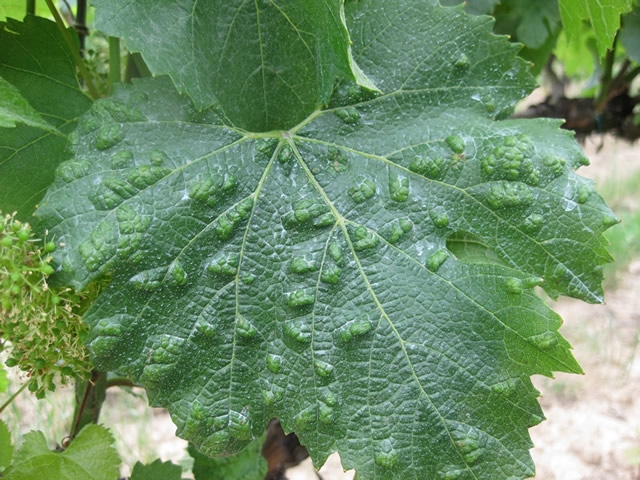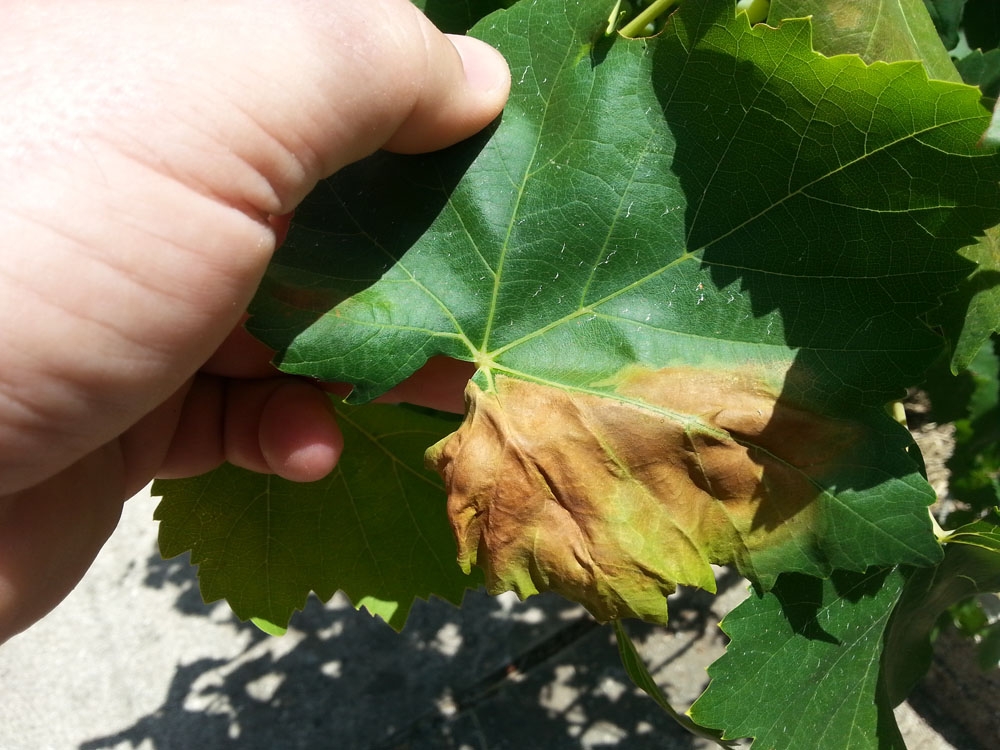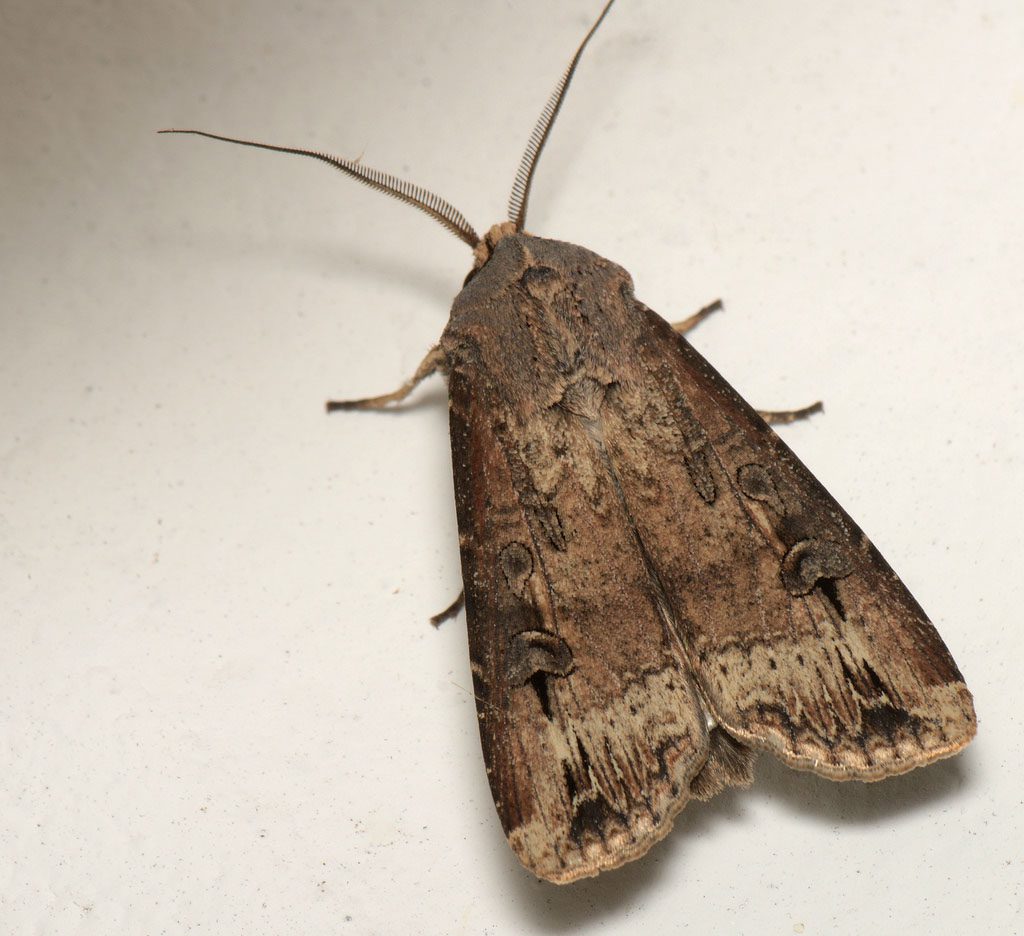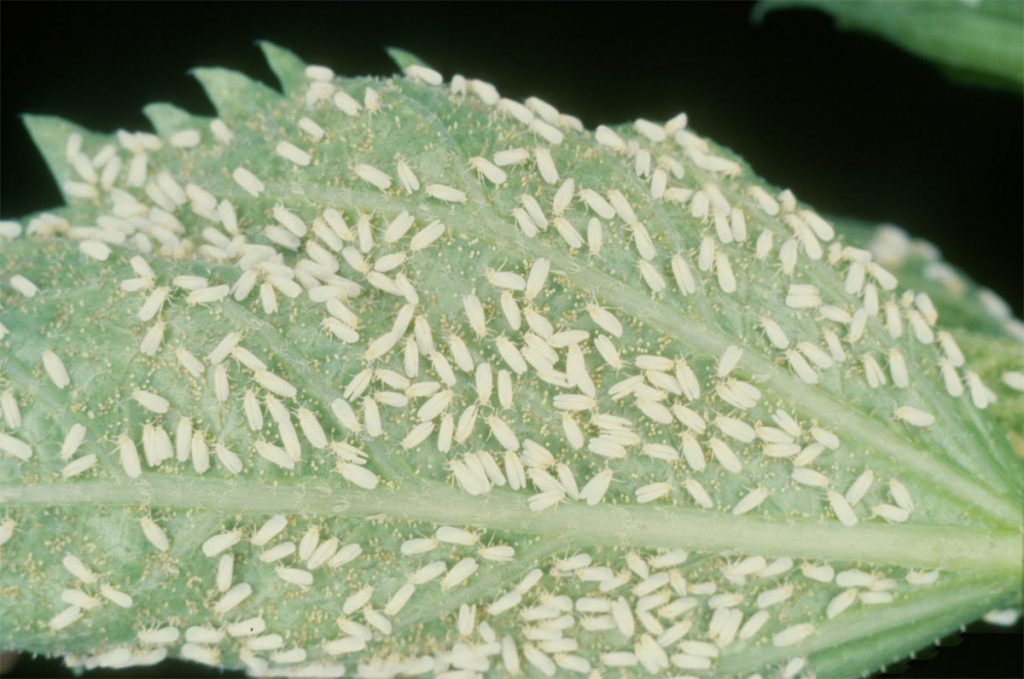The grape erineum mite is widespread in the vineyard regions of Greece. Particularly susceptible is the table wine grape variety Razaki, while less susceptible grape varieties are Sultanina and other wine-making varieties.
Scientific name: Colomerus vitis
Other name: Blister mite
Greek name: Ερίνωση
Damage
Grape erineum mite has 3 races (race of erineum, bud and leaf curl) of which only the first two have been identified in Greece’s vineyards. The erineum race attacks the leaves and creates spots that appear as swellings on their upper surface. In very severe infestations, the growth of the shoots may be delayed or the inflorescences may be damaged.
The race of buds, which causes the most serious damage, attacks the buds, so that they either do not develop or give weak and deformed vegetation (shortening of the shoots, asymmetry of the lamina surface). The result is a reduction in production.
The race of leaf curl has been found in California in raisin. It does not show the typical symptoms of spotted erinosis, but attacks the leaves, causing upward twisting.
Pest
The grape erineum mite overwinters on buds and completes several generations per year between April and November.
Treatment
Where there is a problem with Erinosis, it is treated by applying appropriate insecticides.
Notes
It should be noted that winter spraying also controls the overwintering forms of the mites.
Source
www.bayercropscience.gr
Eriophyes vitis
Grapevine blister mite
Tags: PLANTS ENEMY • VINEYARD





